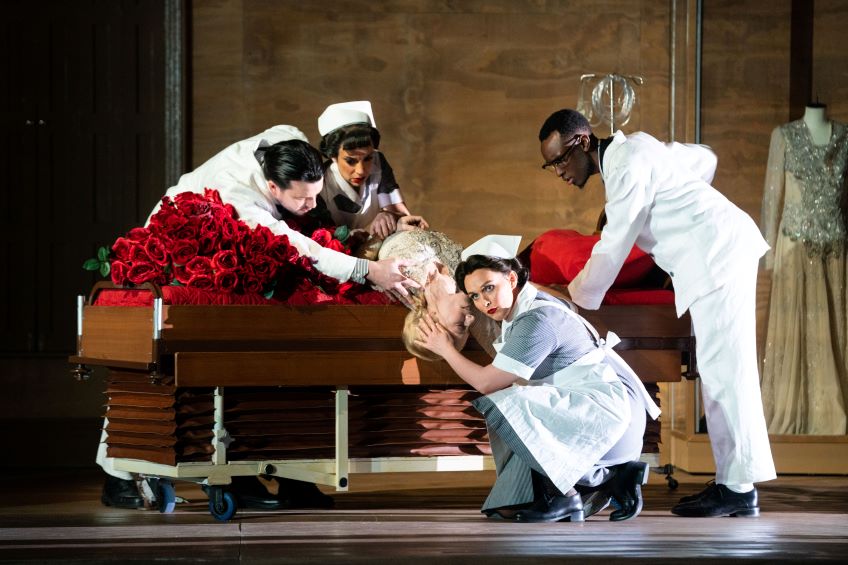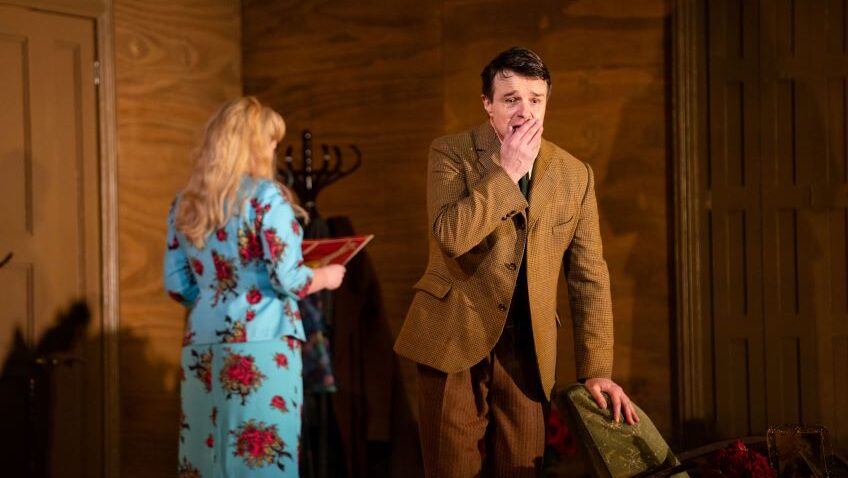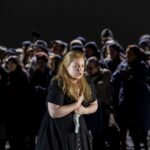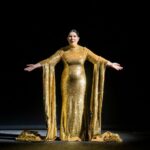Eric Wolfgang Korngold’s psychological thriller, Die Tote Stadt, premiered in 1920 in Hamburg and Cologne to great success. The libretto, written by Korngold and his father, is based on George Rodenbach’s Bruges-la-Morte. The music is so beautiful you wonder why the opera is not performed more often. It’s a first for ENO.
The dead city is Bruges. Paul (Rolf Romei) cannot come to terms with his wife’s death. He mourns her obsessively, morbidly turning their bedroom into a shrine, a temple of memories, a lock of hair in a glass casket, loads and loads of framed photographs.
Marie, sweet and gentle, was a woman of great beauty and purity. Paul is determined that her death will not separate them. He longs for her to be restored to him.

In 1920, Europe was still grieving for those who had died in World War I and many people at the premiere would have identified with Paul, dreaming of being reunited with their loved ones.
Paul meets Marietta (Alison Oakes), a dancer, who is brash, glamorous and sleeps around. She is everything that Marie was not and yet Paul sees in her a reincarnation of Marie and tells her (in a moment of rage) that when he is making love to her, he is making love to his dead wife. Torn between Life and Death, Paul becomes more and more schizophrenic.
The challenges are great. Annilesse Miskimmon’s production does not have the impact the music, conducted by Kirill Karabis, and the singing by Rolf Romei and Alison Oakes has. The hallucinatory sequences are particularly disappointing. An interval between Act 1 and Act 2 would certainly have been most welcome.
To learn more about Robert Tanitch and his reviews, click here to go to his website 




